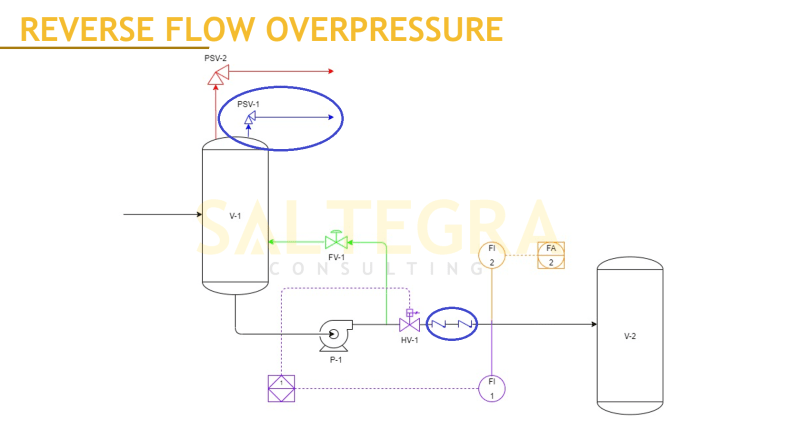Hi there!
Please use the image below as an example:
A check valve allows flow in one direction and automatically prevents backflow when fluid in the line reverses direction. We typically use the dual check valve arrangement when a fluid is sent from a lower pressure system to a higher-pressure system to prevent reverse flow. The design rating of the equipment downstream of the check valve is the one considered when sizing the check valve and the associated relief valve (not fully sized) connected on the upstream equipment of the check valve.
Think of this: if only one check valve is installed, termination of flow accompanied by failure of that check valve in the discharge line will result in a reverse flow. When the fluid has been displaced into a suction system, and a high-pressure fluid enters the upstream equipment, serious overpressure may occur. A single check valve is usually considered acceptable unless there is a potential for the backflow of high-pressure fluid to create pressures that exceed the test pressure of the upstream equipment. That is why there should be a double check valve arrangement for potential reverse flow overpressure scenarios.
Note that two back-flow-prevention devices in series, when inspected and maintained, are sufficient to eliminate significant reverse flow. But since industrial guidelines suggest an assumption for 10% backflow in a well-maintained dual check valve safeguard, it is recommended to pair this with a relief valve (not fully-sized) installed in the upstream equipment.
In any case, you may also contact us (contact@saltegra.com) for a FREE consultation. We'll be glad to assist you.
I hope this helps!
Reference: API Standard 521 - Guide for Pressure Relieving and De-Pressuring Systems

